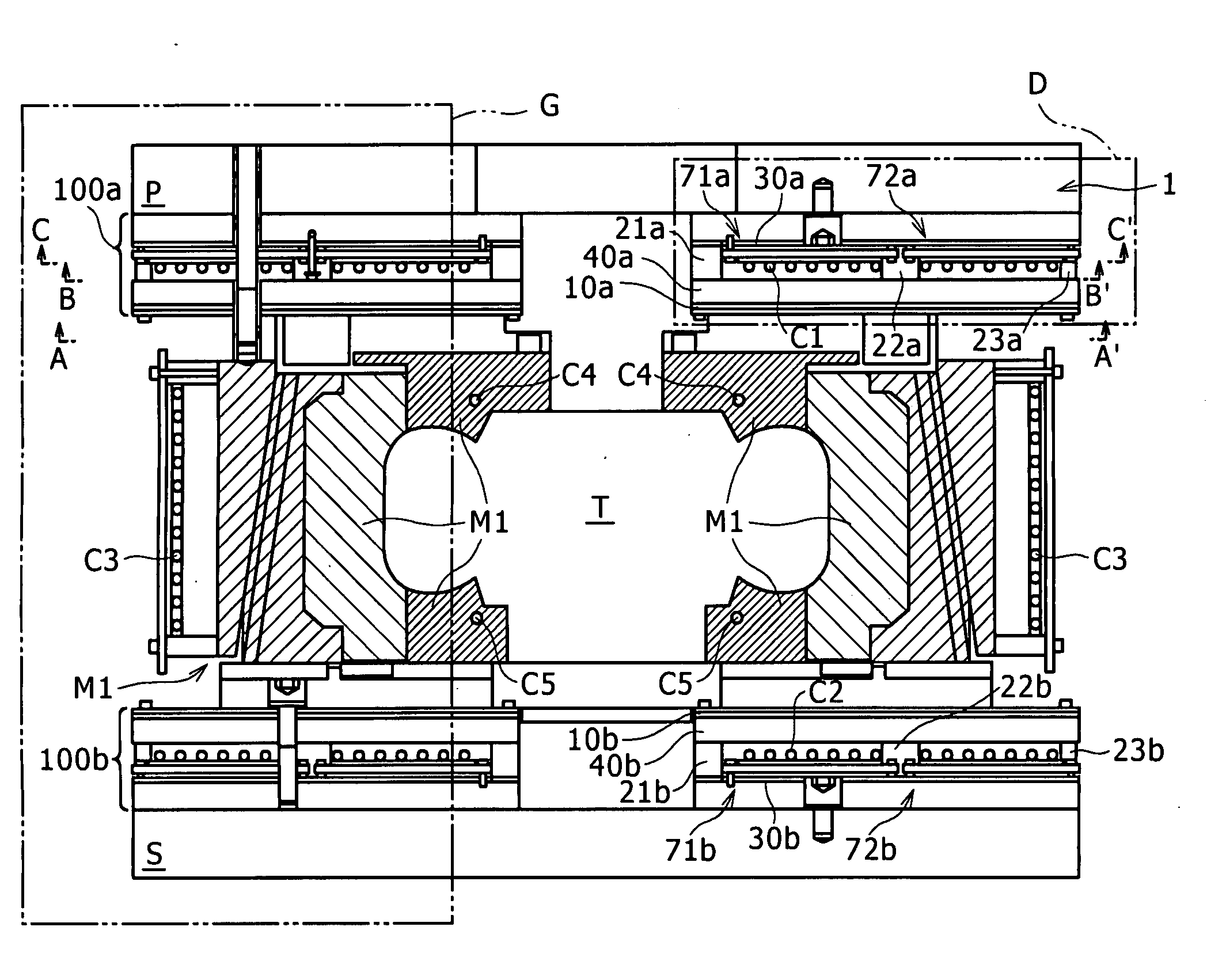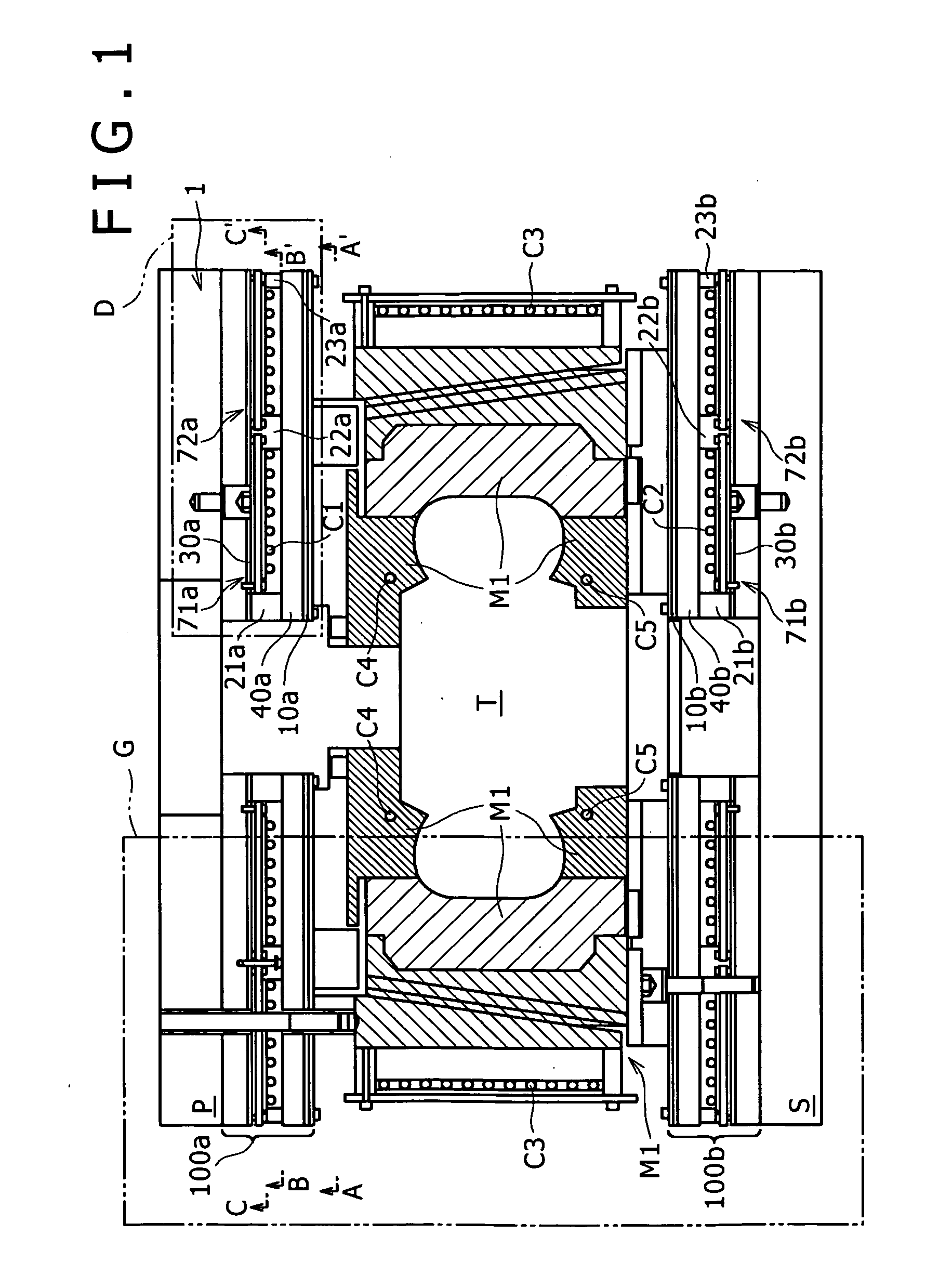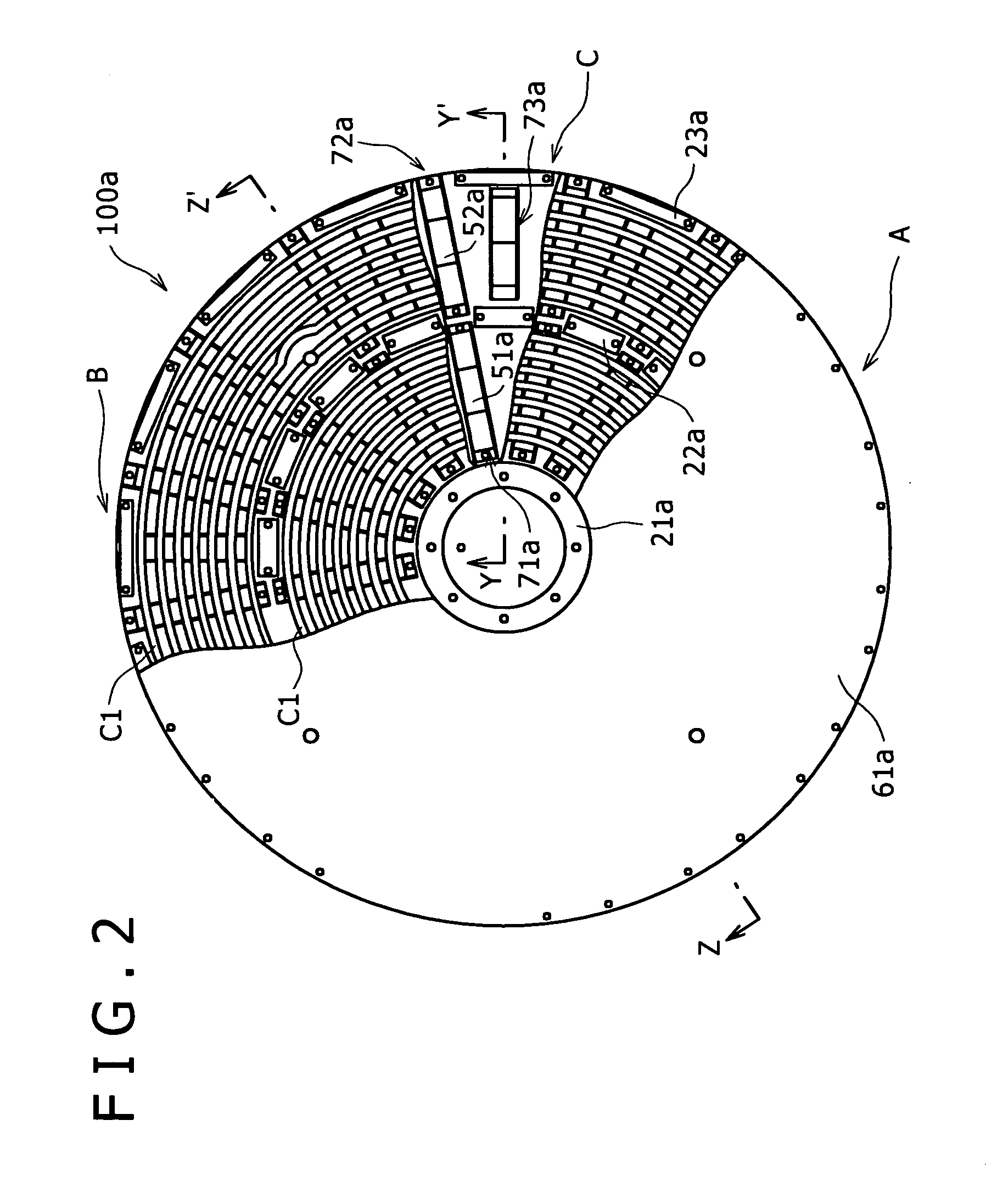Heating Unit, Tire Heating Apparatus, and Method for Remodeling Tire Mold
a tire heating and tire heating technology, applied in the field of heating units and tire heating apparatuses, can solve the problems of inferior heat efficiency of steam heating, and achieve the effects of improving heating efficiency, high thermal diffusivity, and efficient heating of tires
- Summary
- Abstract
- Description
- Claims
- Application Information
AI Technical Summary
Benefits of technology
Problems solved by technology
Method used
Image
Examples
first embodiment
[0049]The entire structure of a tire heating apparatus according to the first embodiment will be described in reference to FIG. 1. FIG. 1 is a schematic side sectional view of the tire heating apparatus according to this embodiment, which shows the entire structure of this embodiment. In FIG. 1, although the mold part is shown by diagonal lines showing a section thereof, diagonal lines are omitted for the heating unit part since the detail thereof is shown in the enlarged view of FIG. 3. In this embodiment, the heating unit of the prevent invention is used as a part of a heating apparatus of a tire vulcanizer.
[0050]A tire heating apparatus 1 comprises, as shown in FIG. 1, a tire mold M1, two heating units 100a and 100b disposed vertically opposite each other to hold the tire mold M1 from both the upper side and lower side thereof, an upper platen support P located at the top of the upper heating unit 100a, and a lower platen support S as a base part located at the bottom of the lowe...
example 1
[0074]Results of heating test carried out using the tire heating apparatus 1 are shown. The test was carried out in the following condition. Since the same condition was adapted to the upper and lower heating units 100a and 100b, the description for the lower heating unit is omitted.
[0075](1) Power source: Rated 5 kw (set to maximum output)
[0076](2) Nonmagnetic conductor 30a: aluminum (4 mm in thickness)
[0077](3) Induction heating coil C1: 30 sq Teflon (trademark)-covered litz wire
[0078](4) Distance between induction heating coil C1 and ferromagnetic metallic member 10a: 25 mm (fixed)
[0079](5) Ferromagnetic nonconductive members 51a, 52a: not used
[0080]The power factor (effectively used power / input power) was calculated by changing the distance L between the induction heating coil C1 and the nonmagnetic conductor 30a by adjusting the first spacers 71a and 72a (and third spacer 73a) while supplying power to the heating unit under the above condition. The test results are as follows (...
example 2
[0081]Results of heating test for the heating unit 100a with or without ferromagnetic nonconductive members 51a and 52a are shown. The condition thereof was set as follows.
(1) Power source: Rated 5 kw (set to maximum output)
(2) Nonmagnetic conductor 30a: aluminum (4 mm in thickness)
(3) Induction heating coil C1: 30 sq Teflon (trademark)-covered litz wire
(4) Distance between induction heating coil C1 and Ferromagnetic metallic member 10a: 21.5 mm (fixed)
(5) Distance between nonmagnetic conductor 30a and induction heating coil C1: 13 mm (fixed)
[0082]The test results in the above-mentioned conditions with or without the ferromagnetic nonconductive members 51a and 52a are as follows.
(1) Without ferromagnetic nonconductive members 51a and 52a, Power factor: 15.0%
(2) With ferromagnetic nonconductive members 51a and 52a, Power factor: 33.7%
The power factor in the heating unit 100a with the ferromagnetic nonconductive members 51a and 52a was high with an increased equivalent resistance, com...
PUM
| Property | Measurement | Unit |
|---|---|---|
| Magnetic field | aaaaa | aaaaa |
| Size | aaaaa | aaaaa |
| Distance | aaaaa | aaaaa |
Abstract
Description
Claims
Application Information
 Login to View More
Login to View More - R&D
- Intellectual Property
- Life Sciences
- Materials
- Tech Scout
- Unparalleled Data Quality
- Higher Quality Content
- 60% Fewer Hallucinations
Browse by: Latest US Patents, China's latest patents, Technical Efficacy Thesaurus, Application Domain, Technology Topic, Popular Technical Reports.
© 2025 PatSnap. All rights reserved.Legal|Privacy policy|Modern Slavery Act Transparency Statement|Sitemap|About US| Contact US: help@patsnap.com



